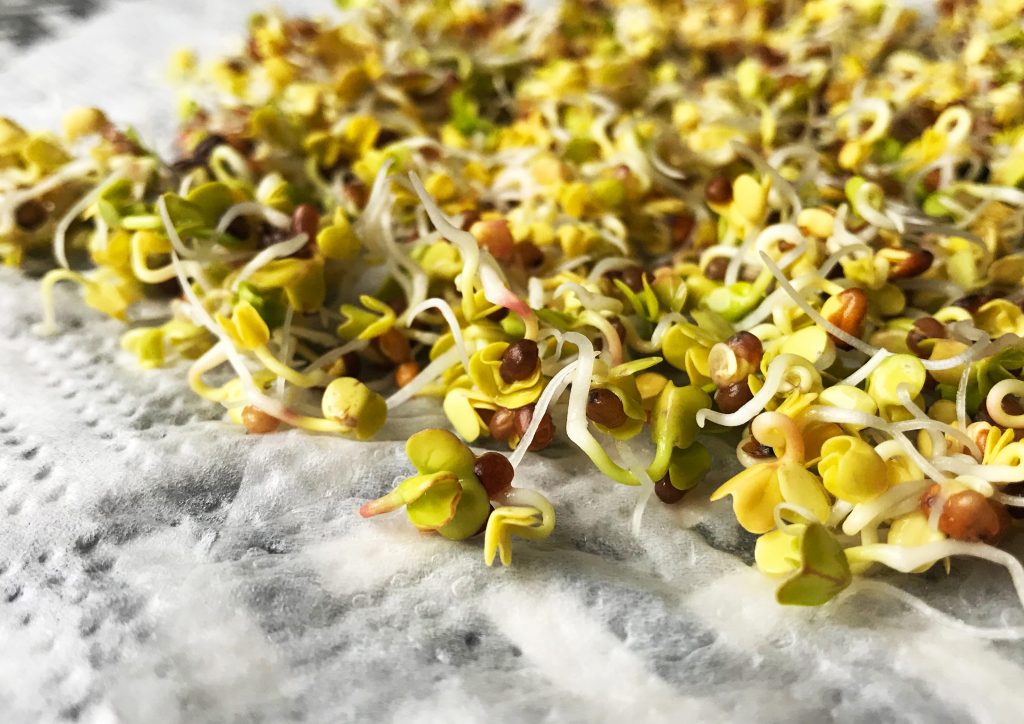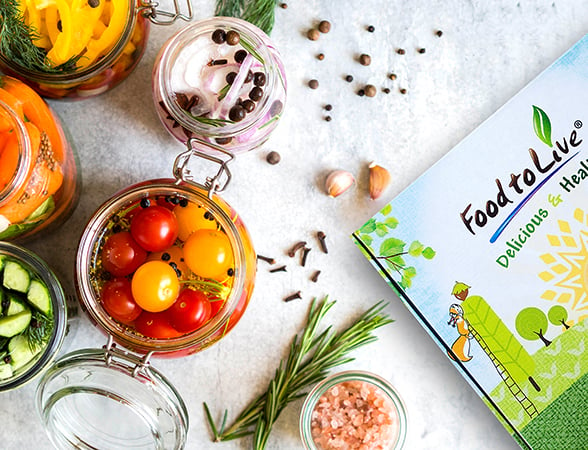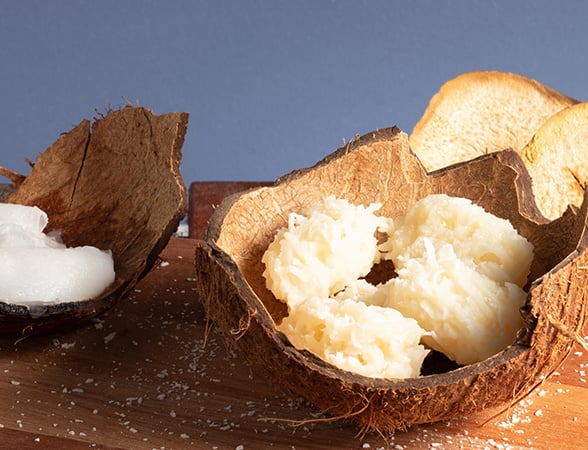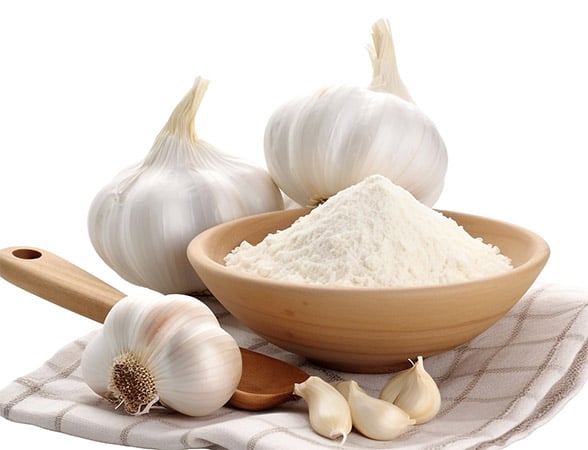May 22, 2019 · Written by Foodtolive Team
How to Grow Sprouts At Home
Sprouts are an excellent source of protein and vitamin C and contain very few calories. Sprouts come in an abundance of varieties for any recipe you can imagine, making them a versatile food that will quickly become a kitchen staple.
Growing sprouts at home is an easy foray into the subject. Our guide is foolproof. You’ll be growing crispy, crunchy sprouts that are available whenever you want them.
Step 1: What Seeds To Grow
When choosing which sprouts you want to grow, pick seeds specifically meant for sprouting, as opposed to planting, to make sure they are edible. You can either check out the produce section in your grocery store for sprouting seeds or look on Amazon for sprouting mixtures.
The most common seeds used to grow sprouts at home are alfalfa, radish, broccoli, red clover, lentils, mung beans, pumpkin seeds, sunflower seeds, and chia seeds. However, chia seeds, along with flax and other mucilaginous (gooey) seeds are a little more challenging sprouts to grow at home so if you’re a beginner, consider other seeds to start.
A Quick Note About Sprouting Duration
Depending on the variety of seed you buy, it could take between two to seven days.
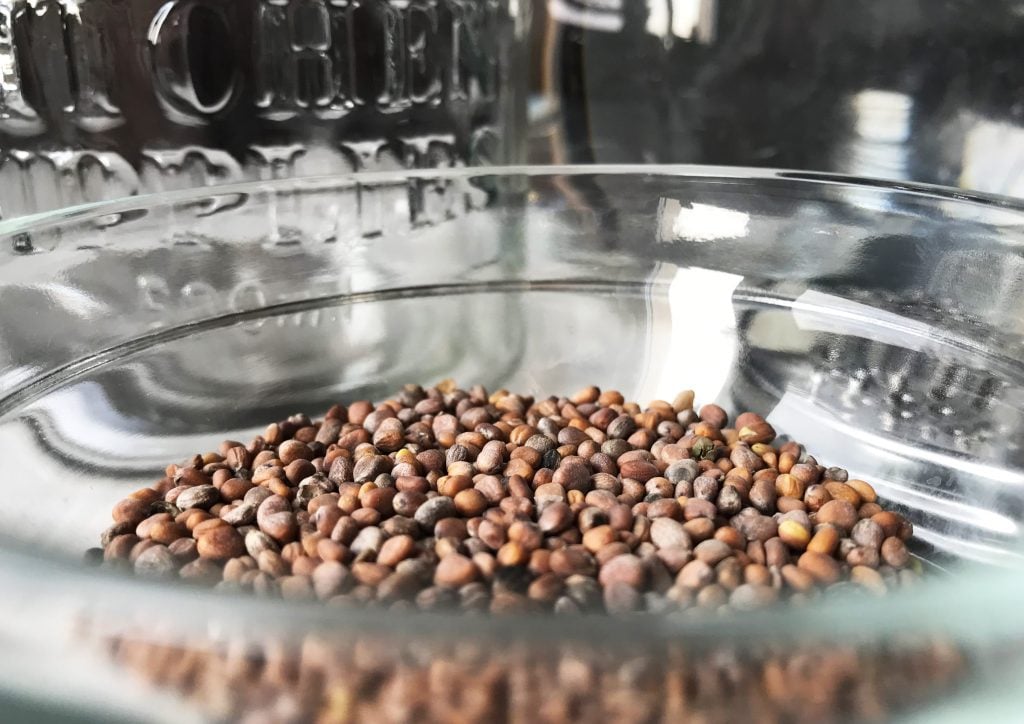
Step 2: Sprouting Supplies
Supplies for your sprouters is cheap and easy. Buying a screen lids makes will quickly turn a mason jar into a sprouting jar. When buying mason jars, choose ones with a wide or regular mouth. Quart-sized wide mouth jars allow for the best air circulation and drainage. And when sizing your screen lid, make sure it is the right size for the jar you use.
Different sprouts like alfalfa may require different sized screen lids. Choosing a half-gallon sprouting jar and cover is ideal for sprouting large seeds like legumes and grains.
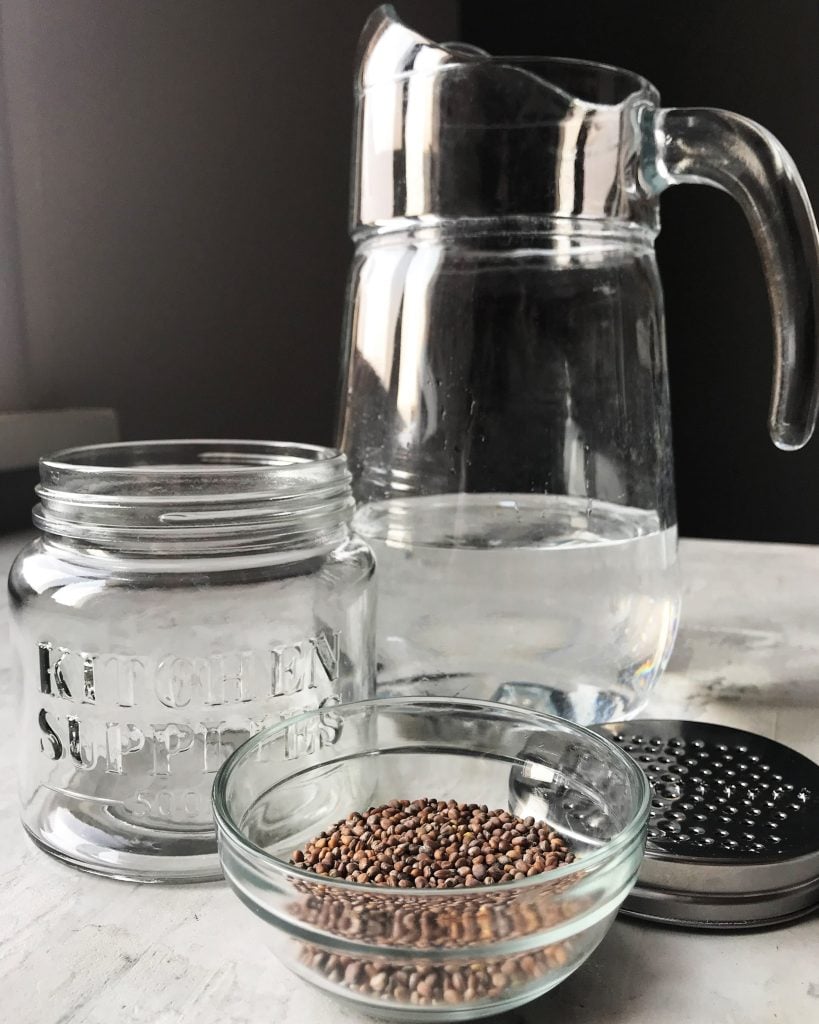
How to Make Sprouting Jars at Home
Supplies:
- Quart-size mason jars (either wide or regular mouth)
- Sharpie
- Plastic needlework canvas
- Scissors
- Dried seeds or beans for sprouting
Plastic Needlework Canvas
This canvas is for the sprouting jar lid inserts and makes a screened airflow for the jar. You can find a plastic needlework canvas at a craft store. They are colorful, inexpensive, and come in a variety of sizes.
Consider using different canvas sizes to allow even the smallest seeds to sprout. Depending on the size of the seeds, you can also substitute cheesecloth for the plastic canvas.
Making Your Sprouters
- Place the jar lid on the canvas and trace it using a Sharpie.
- Cut out the circles you traced and insert them on the jar’s lid ring (don’t use the inner metal circle, only the canvas one). Screw the lid on the jar.
Step 3: Growing Your Sprouts
Before you begin Step 1, it is crucial to sanitize your sprouting equipment. Boil the jars and metal in clean water for ten minutes (but not plastic screen lid inserts). If you are using a plastic screen lid insert, wash it with hot water and soap. Make sure you dry everything thoroughly.
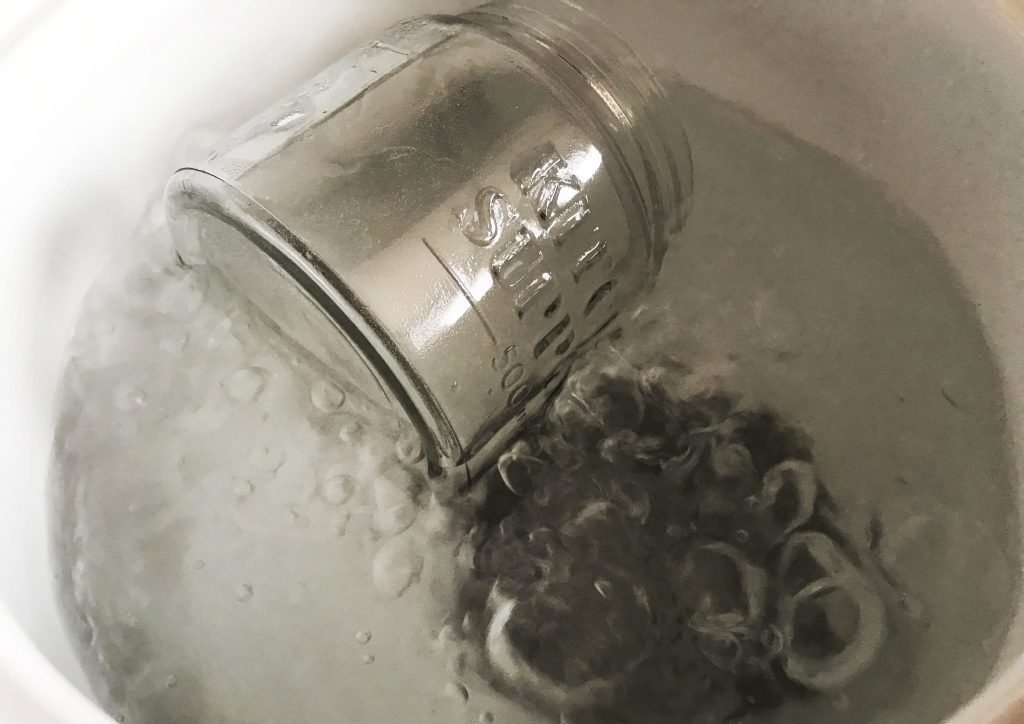
- Rinse your seeds with cool water (70 degrees is the best temperature whenever your seeds and sprouts need rinsing). Check your seeds for stones, broken seeds, or other debris. Once your sprouters are ready, place two tablespoons to 1/2 cup of seeds in each jar, depending on how many sprouts you wish to grow.
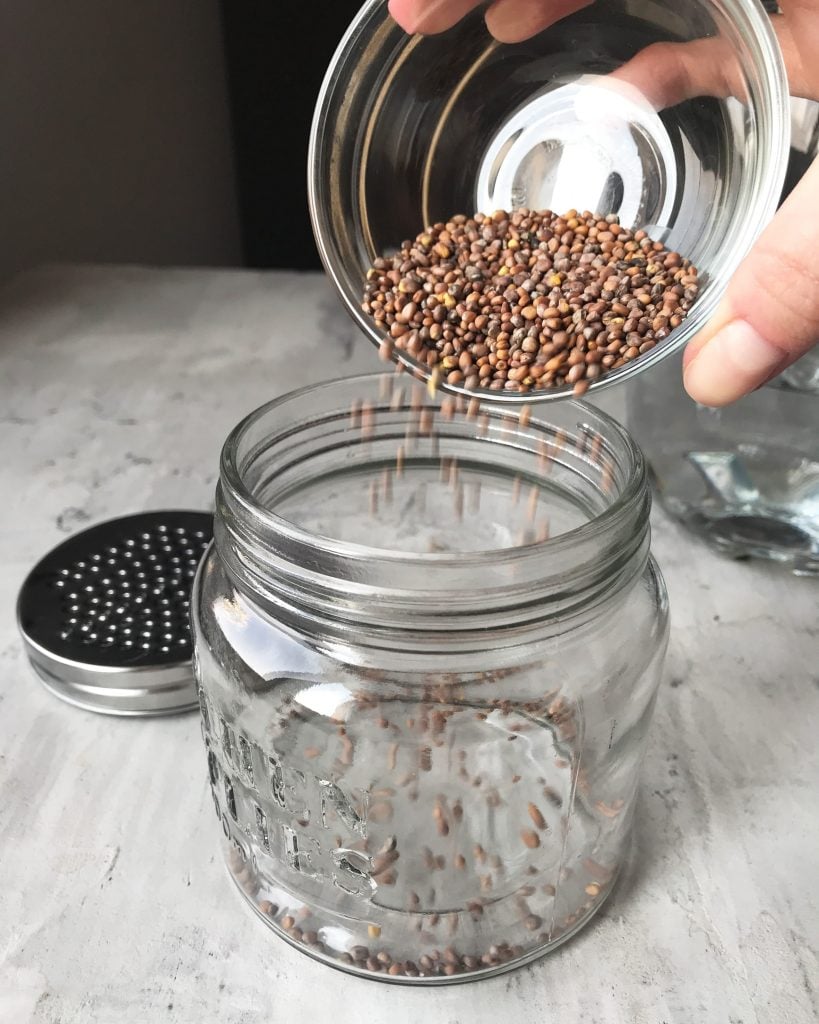
- Use the screen lid to seal the jar. Fill the jar with clean or filtered water. Then cover the seeds with an additional inch of water. Next, leave them in a cool spot, away from direct sunlight, overnight (or at least eight hours).
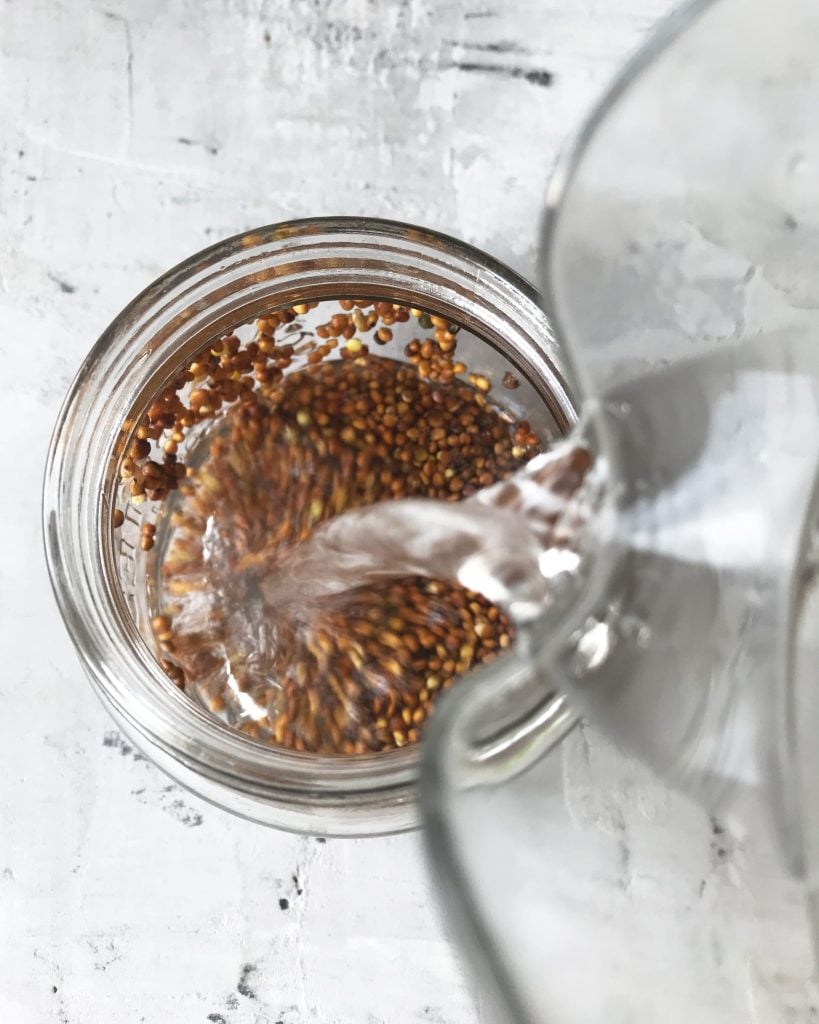 Bigger seeds may need more time to soak. Large seeds like chickpeas or kidney beans may need as much as 24 hours to soak. Generally, your seeds should remain submerged long enough to double in size. Warmer water will make a shorter soak time, and colder water will take longer.
Bigger seeds may need more time to soak. Large seeds like chickpeas or kidney beans may need as much as 24 hours to soak. Generally, your seeds should remain submerged long enough to double in size. Warmer water will make a shorter soak time, and colder water will take longer. - The next morning, take out whatever seeds or beans are floating in the water, then drain the water through the screen. Thoroughly rinse once more with clean, fresh water, then drain. Put the jar either upside down or propped up at an angle to drain for a more extended period. Keep your seeds in a cool place and out of direct sunlight.
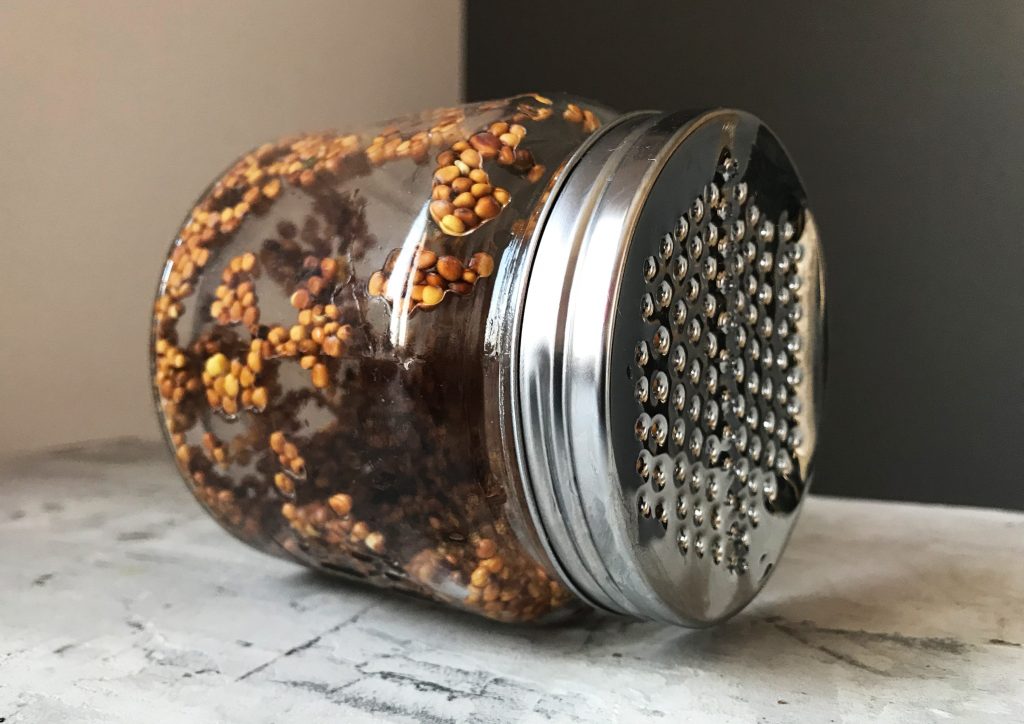
- Rinse your seeds at least twice a day, though we recommend three to four times. To do this, fill the jar and cover the seeds with water, swish to rinse every sprout, then drain through the screen and leave the sprouter on its side until the sprouts have grown to your desired size. During the spring and summer when the weather is warmer, rinse your sprouts often to prevent bacteria from growing. If you are growing sprouts at home during fall or winter, you won’t need to clean them as regularly, but they may not sprout as well if the temperature is cold. If you find yourself forgetting to rinse and drain your sprouts, set an alarm on your phone to remind yourself to do it!
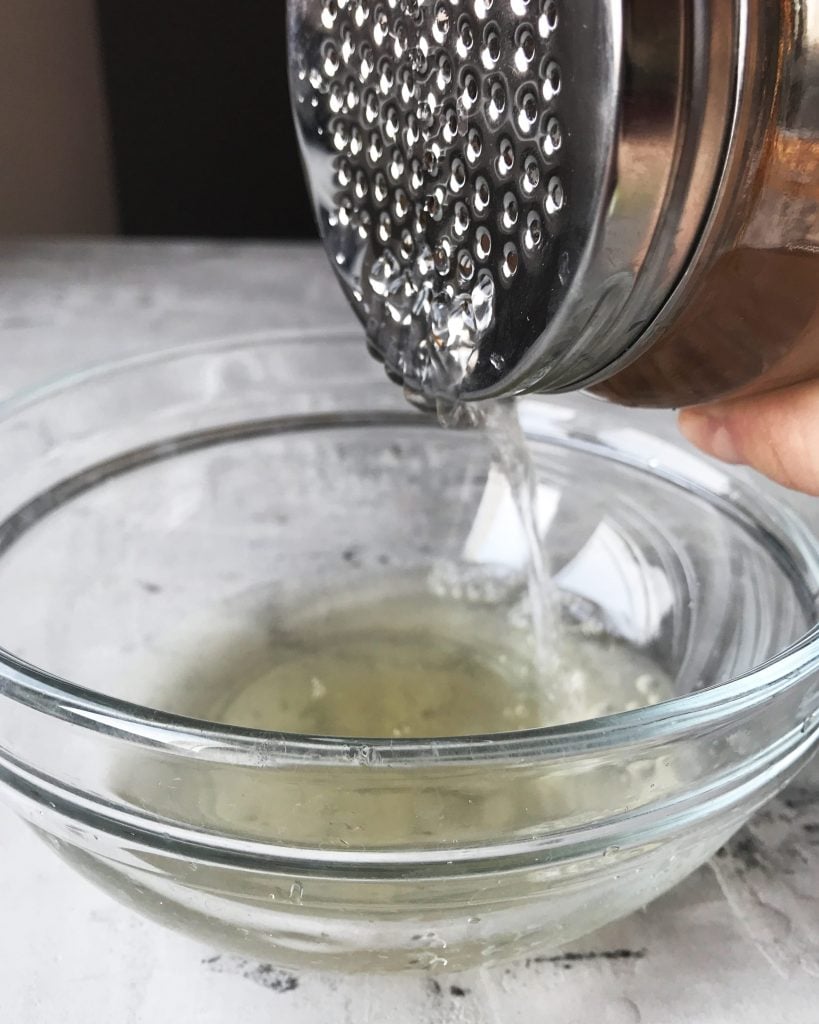
- Once your seeds grow to the height you want, it’s time to de-hull. Submerge your sprouts in cold water and use your hands to push down. When the majority of the hulls rise to the top, slowly pour out some of the water until most of them are gone. You may have to repeat this step, depending on how many sprouts you grew. Then, take them out of the jar and dry them using either a salad spinner or paper towels. Then, put them in a plastic bag or another container you can seal and keep them in your refrigerator. Sprouts will stay fresh for up to seven days.
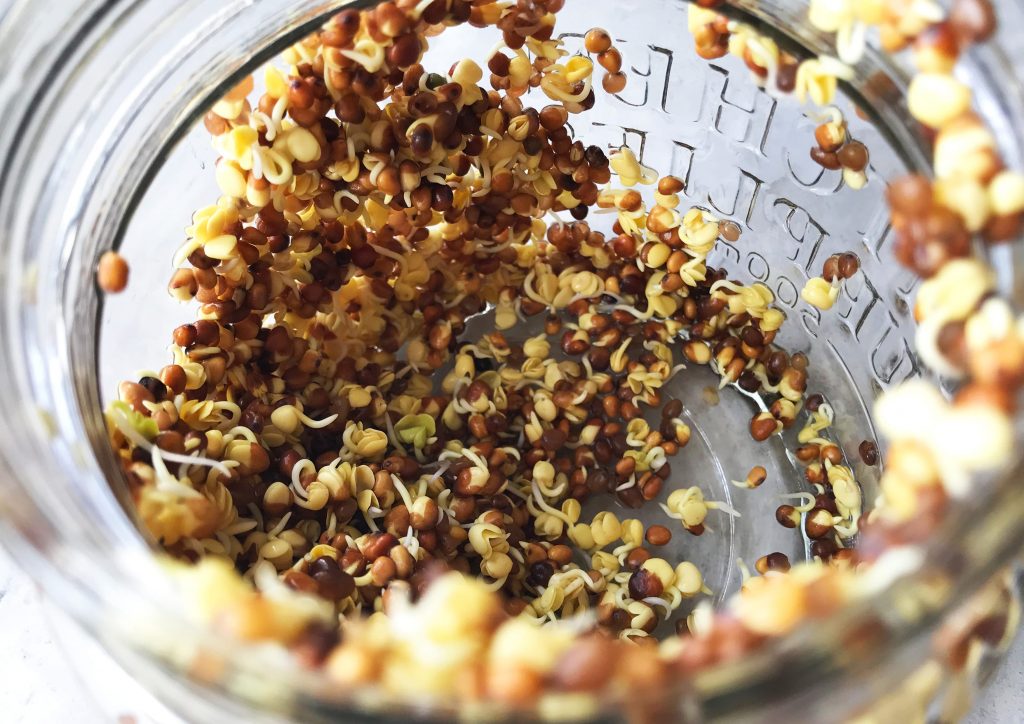
Are Sprouts Grown From Home Safe to Eat
Some have voiced concerns that sprouts of any kind (homegrown or commercial) are not entirely safe for consumption. Unsanitized seeds or conditions where sprouts grow potentially exposes the plants to E Coli or Salmonella.
As with anything related to food safety, there are several practices you should follow when you grow sprouts at home.
- Buy quality seeds meant for sprouting (look for pathogen-free seeds) and make sure they come from a reliable source.
- Sanitize all equipment involved in sprouting before growing.
- Use only water that is clean or filtered.
- Stay on top of rinsing your sprouts every day. While twice a day is fine, three to four times daily is the best way to prevent exposure to E Coli or Salmonella.
- Make sure all the water is drained from the sprouting jar after rinsing — every time.
- Bacteria love warm temperatures, so when leaving your sprouts to grow, keep them in a cool place away from direct sunlight. This is a crucial step in preventing bacteria growth.
- Dry your sprouts completely.
When you store your sprouts, use a clean plastic baggie or container. Make sure you eat them within a few days. Don’t eat sprouts that smell off or look bad.
Step 4: Using Your Sprouts
Sprouts aren’t just for sandwiches and salads; if you have the proper equipment at home, it’s possible to make sprouted grain flour.
Follow this process for whichever grain you plan on using, but only allow your seeds to just start sprouting (think 1/4). Next, put them in a food dehydrator for about 24 hours until they are completely dried. Grind in a grain mill, and enjoy!
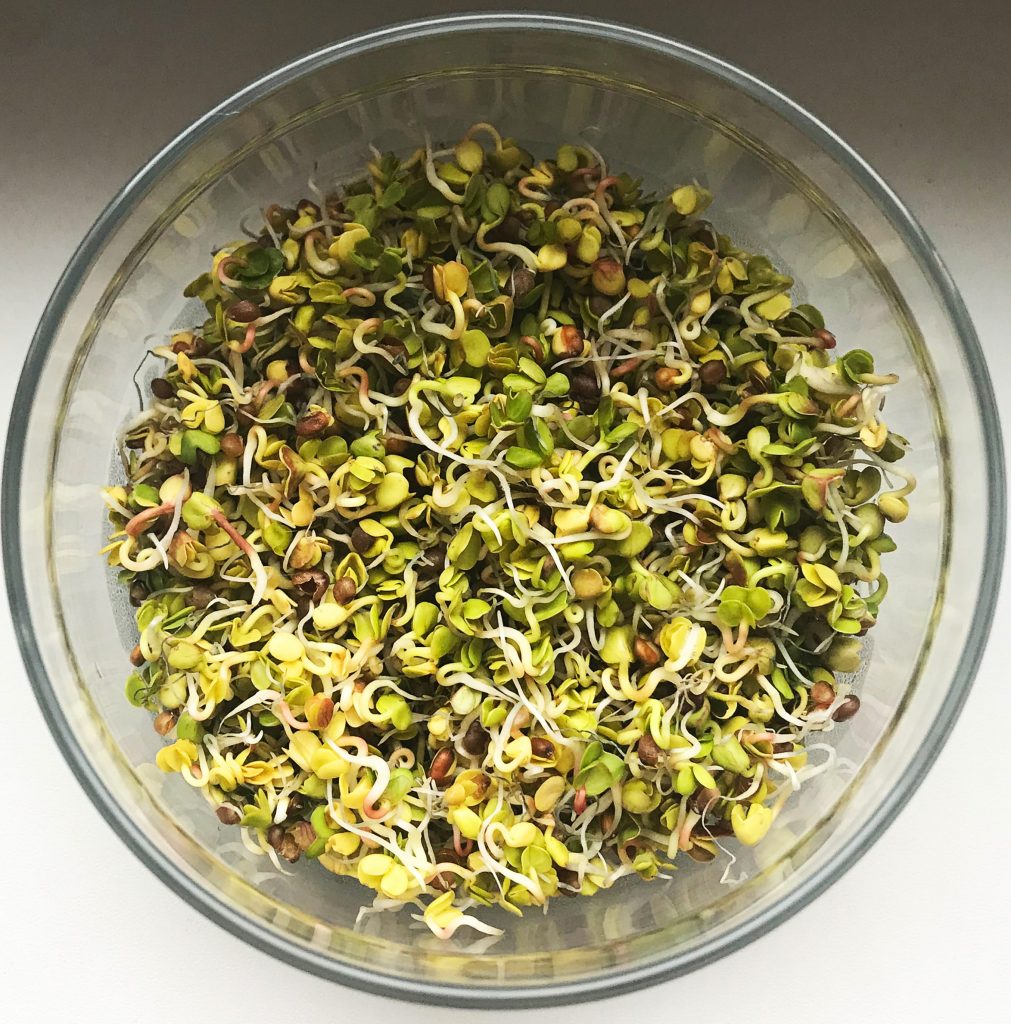
Moldy Sprouts
The next time you grow sprouts at home, and you think they’re molding, not to worry. The fine root hairs look a lot like mold. These little hairs appear when the sprouts are the driest. If the seeds and sprouters you use are clean and they have plenty of air circulation, the chance of molding is minimal.
If you’re still uncertain, rinse your sprouts and see if the mold vanishes. If it does, it’s only root hairs. The water causes the fuzz to cling to the main root until it dries when they will stick up once again.
Fruit Flies
Fruit flies are an annoyance, but they’re a natural part of keeping fresh produce in the summer. Use apple cider vinegar or other fruit fly traps near your sprouters. They won’t completely get rid of them, but it should help manage the fly population. Using cheesecloth as opposed to screen lids will also help keep fruit flies off your sprouts.
